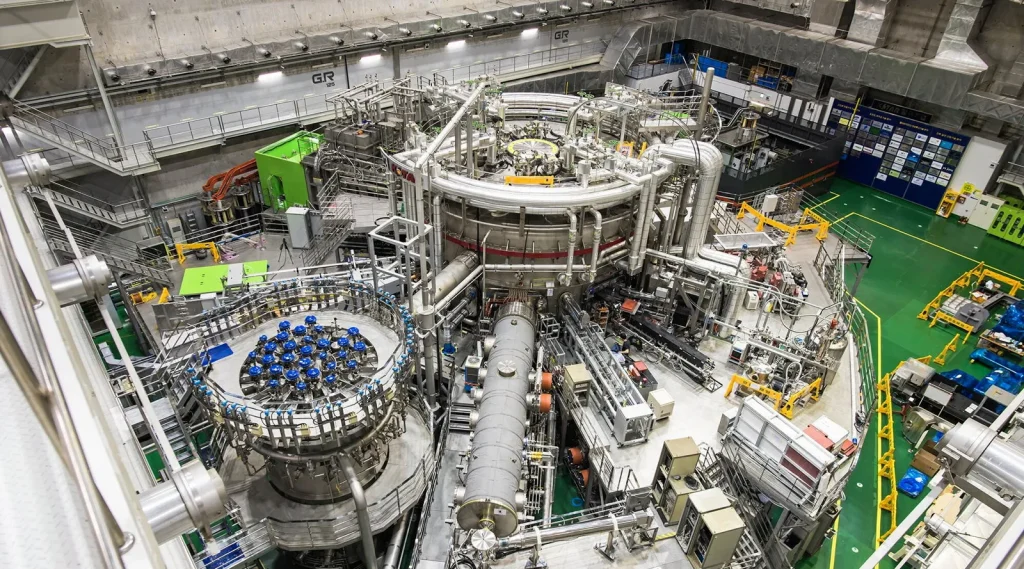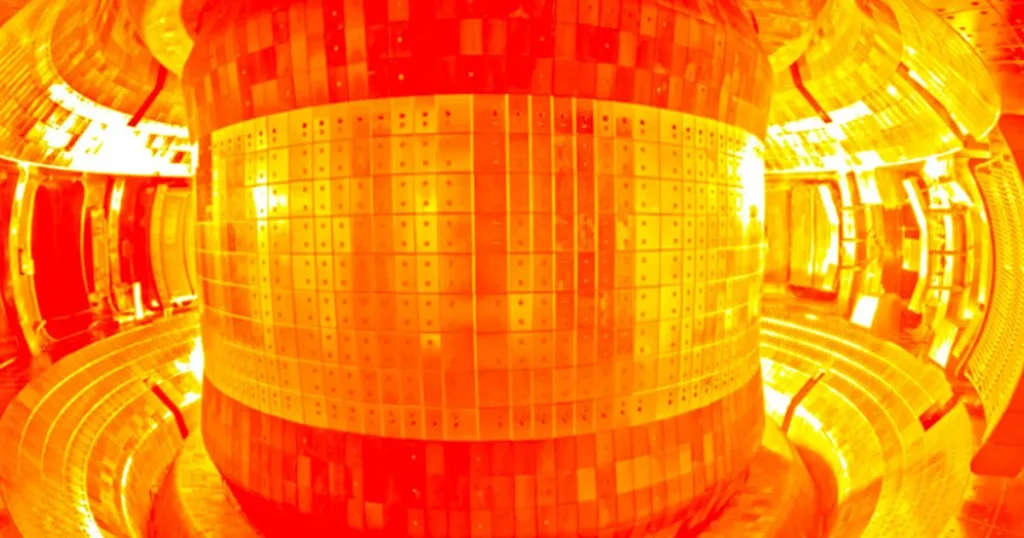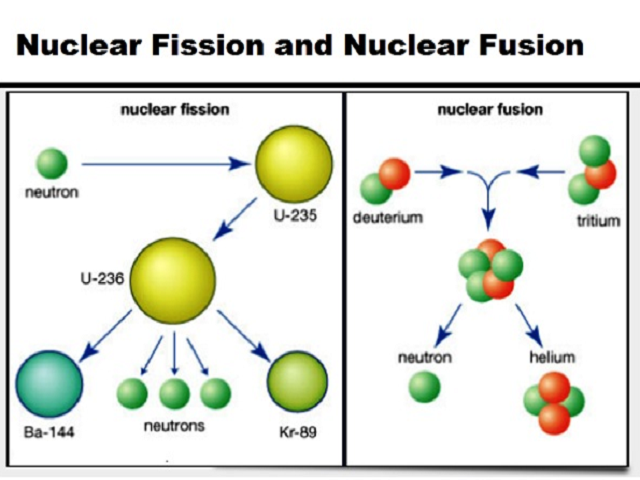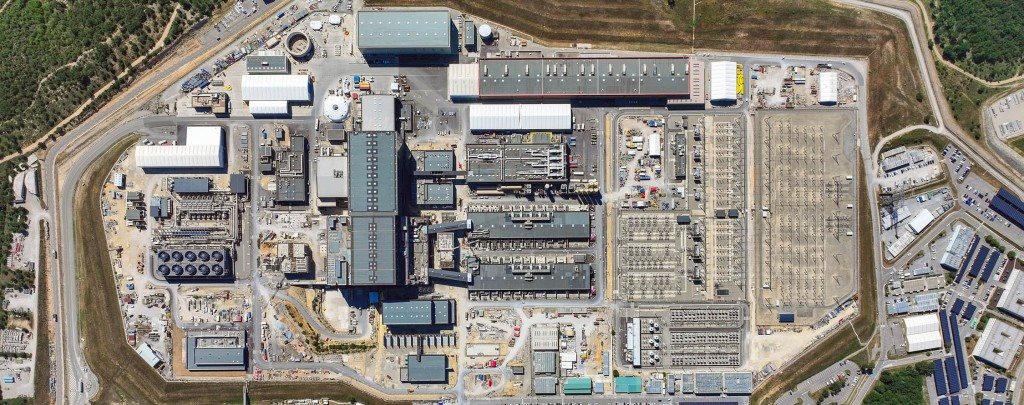Hello Stacker, the need for electricity in the future will increase very drastically and it is feared that it will not be covered by fossil energy or energy refills until in 2006 a combination of countries consisting of Europe, Japan, China, India, America, Korea and Russia agreed to build a nuclear fusion tokamak engine project. hydrogen power they formed an association called either organization so that the machine designed and built is called either tokamak, the tokamak machine will produce heat equivalent to 10 times the heat of the sun’s core or around 150 million degrees Celsius.

ITER is a proposed tokamak (magnetic confinement fusion) experiment designed to demonstrate the scientific and technological possibility of using a full-scale fusion power reactor. ITER builds on research conducted on devices such as the TFTR, JET, JT-60, and T-15, and will be larger than all of them. The program is anticipated to last for 30 years – 10 years of manufacture, and 20 years of operation. -ITER
This reactor is not a nuclear fission reactor made from uranium plutonium which can produce atomic bombs with highly radioactive but this is a hydrogen perfusion reaction Deuterium–tritium. The idea of fusion power has intrigued scientists for almost 100 years when they discovered that it is the process that drives stars and the sun to emit heat energy fusion reactions that combine 4 atoms can produce four times as much energy compared to nuclear vision and 4 million times more than burning coal, the fusion reaction does not produce long-term radioactive waste, the reactor also cannot melt or leak, so there are no incidents like Chernobyl or Fukushima in Japan.
Hydrogen fuel is very easy to find and the price is quite cheap. This will be a big game changer for the energy industry in the future. Tokamak have very high engineering complexity and enormous costs of up to 22 billion dollars. Therefore, cross- country and intercontinental collaboration is needed. Either tokamak is designed to demonstrate the scientific and technological feasibility of its power.
Fusion on an industrial scale to show that it can be done in smaller sizes and it is hoped that many countries will be able to produce similar machines around the world once this ama machine is successfully operational.
How it works?
The working method starts with the injection of tritium dot gas into a circular shaped device such as donut which is called a tokamak then an electric current is injected which will change the gas into a material called plasma molecules which are then separated and ionized so that the nucleus is separated from the electrons and everything has a charge to the neutrons produced by fusion.

The next step continues heating with extraordinarily large electromagnetic waves which will bombard the particles in the plasma with neutrons to create a temperature of 150 million degrees Celsius or 10 times hotter than the sun.
This temperature is the temperature required for the particles to meet and collide. This extraordinary temperature is not any material on earth that can withstand it. so a high-strength magnetic cage is needed in a large vacuum vessel. This magnetic vessel consists of three main magnetic systems, the first is a central column called the Central solenoid which is about 18 m high, weighs up to 1,000 tons and is made by America, then 18 toroidal magnetic files which are the shape is like the shell of the letter d, it is made separately, half is made in Europe and half is made by Japan and on the other part there is what is called a circular magnetic idolfile pattern made by China and India.
What the difference?
What is the difference between a uranium nuclear fission reaction and a tok fusion reactor?
Nuclear fission requires hundreds of tons of uranium and plutonium fuel, while tokamak nuclear fusion reactors require very light hydrogen raw materials, namely 2-3 grams of hydrogen, deuterium and tritium. Imagine a machine the size of a building that produces 10 times the heat of the sun only requires a pinch of hydrogen fuel.

The funding and project management system of this exchange is carried out in a fair and balanced manner by all members because this is a joint project from many countries. Of course, initially many wanted to build it in their country because there were financial and economic benefits, but then the members agreed that this would be built in Europe, to be precise. in France, therefore, Europe, which consists of 35 countries, contributes 45 percent, while China, nine percent, America, nine percent, Korea, 9 percent, Japan, nine percent, Russia, nine percent, and India also contribute nine percent.
The Advantages?
Apart from being financial, it also takes the form of responsibility for the components that will be sent and shipped. -install on the tokamak, each member will get the same intellectual property rights if they want to apply it to their country. Unfortunately Indonesia not Joining!

The process of making this ama tokamak is very, very complicated and must be very detailed, especially the level of precision must be high so that the particles can be trapped perfectly in the magnet so that the project This is dubbed the most complex engineering project in the longest term after it was agreed in 2006. The construction process only started in 2010 and in 2021 the engineering process and contribution has reached 80% due to a slowdown due to the pandemic, but the tokamak is planned to be fully operational in 2025. The tokamak will produce electricity. equivalent to 500 megawatts and if it is fully operational then in 2030-2050 there will be many hydrogen fusion plants born in various countries which can accelerate industry and also slowly restore health from the greenhouse effect.
